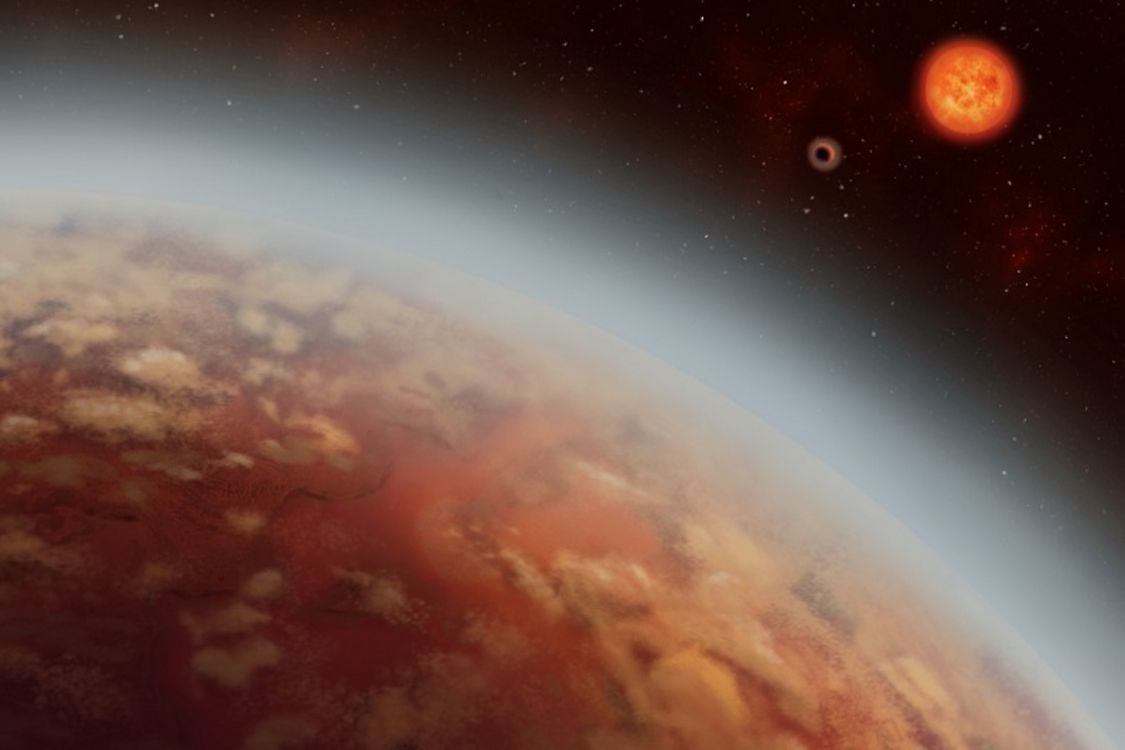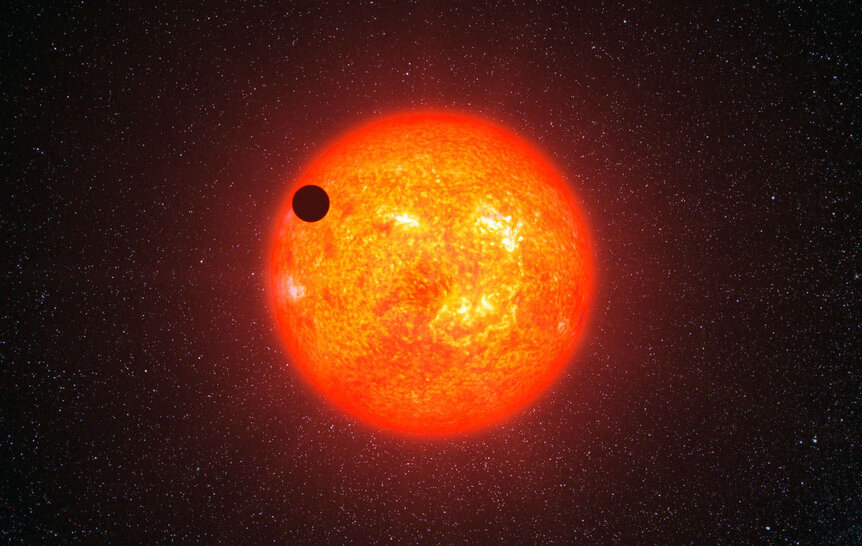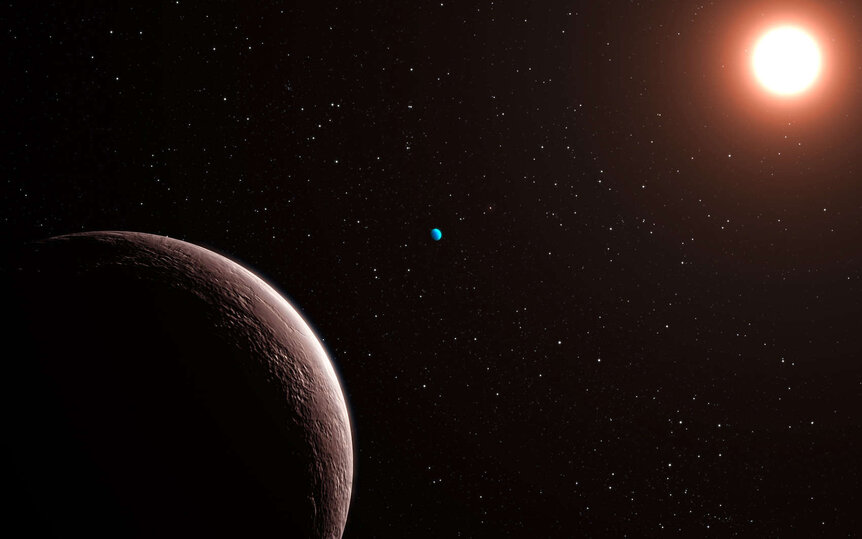Create a free profile to get unlimited access to exclusive videos, sweepstakes, and more!
A hidden planet reveals itself by yanking on its neighbor

In 1990, not a single planet outside our solar system was known. Now, not only do we know of thousands, but we have also have an almost embarrassing number of ways to find them.
You may have heard of the transit method, where a planet passes in front of its star, and we see a dip in the amount of starlight, like a mini-eclipse. This is the most successful method so far, and gives us the radius of the planet. You may also know the radial (or reflex) velocity method, where a planet tugs on its star gravitationally as it orbits, which we can see as a Doppler shift in its light. This gives us the planet's mass. There's also direct imaging, where we literally see the planet in an image. That works best for young systems.
But there's another method that is more subtle, but works pretty well in a limited number of circumstances.
Say a planet is discovered orbiting a star via transits. Also orbiting the star is an undetected planet, in an orbit that's close enough to the first planet that they can interact gravitationally. If, right before a transit, the second planet is ahead of the star, it drags the first planet ahead a bit in its orbit, and the transit will occur a little bit early. If the second planet is behind the first in its orbit, it'll pull back on the first planet, and the transit happens a little late.
This can be measured, and it's called the Transit Timing Variation (or TTV) method. A lot can be determined about the planets this way! And in fact it was used to discover an interesting planet orbiting a nearby star, which is what this is really all about.
The star is called K2-146. It's about 260 light years away, so kinda sorta close by. It's a red dwarf: a dim, cool star, only about a third the mass and width of the Sun, and barely more than 1% as bright. It was observed by the Kepler exoplanet-finding spacecraft over the course of a few months in 2015, and a planet was quickly discovered orbiting it.
The planet, K2-146b, orbits in just 2.6 days at a distance of only about 4.1 million kilometers — Earth orbits the Sun 150 million kilometers out, so this planet is close in. Even though the star is feeble this planet is likely much hotter than Earth due to its proximity to the star.
The rapid orbital period meant a lot of transits were seen even in the short observational period that Kepler saw it… and several astronomers noted that it sported noticeable variations in its transit times. No other planet was seen to transit, though.
…until late 2017 and again in mid-2018. That's when Kepler (though renamed K2 at that point) observed the star once more, and that longish gap was actually a boon in this case because the third planet inferred from the timing variations started transiting the star as well!
That planet, K2-146c, is about 5.4 million kilometers out and takes 4.0 days to circle the star. Here's the fun bit: Both planets orbit the star very nearly but not quite edge-on as seen from Earth. During the earlier campaign the second planet barely grazed the star from our viewpoint, and the transit was too shallow to be detected. However, as the two planets orbit and tug on each other, their orbital orientation can change, and what was once a grazing transit becomes a deeper one years later! So it took a while, but planet c eventually tipped its hand.
Both planets are bigger than Earth, about 28,000 and 30,000 km across — Earth is about 13,000 km across. That would make them either super-Earths (rocky planets but bigger than we are) or mini-Neptunes (more like gas giants with a thick atmosphere). Which is it?
You need the mass for that, and transit timing variations allows astronomers to get that. Using the data from all the Kepler observations the astronomers found TTVs changed the transit timings of both planets by as much as 3 hours. Using those numbers they could run the equations backwards to get the masses of the planets needed to create those TTVs.
They found the planets have masses of 5.7 and 7.5 times Earth's. That makes them both rough 2/3rd as dense as Earth, so they're either water worlds (more water and less iron makes them lower density) or again they have thick atmospheres. At the moment it's not possible to say. Perhaps follow-up observations with the James Webb Space Telescope might yield atmospheric information.
This is all quite astonishing. Planet c wasn't even visible at first, but astronomers could infer it was there, and even though it barely transited the star they were able to determine a lot about it, including, critically, its size and mass — from there, you can get the density, a possible composition, and even a bit about its atmosphere. And the same for planet b, too: Normally you need radial velocity measurements to get the mass, but here just the effect of the two planets on each other was enough to figure that out. Amazing.
Planetary systems come in a lot of varieties, but we have a lot of different ways to discover and characterize them, too. The more and different ways we have to look at something, the more we learn. Diversity is strength.
Huh. Maybe there's a life lesson in there too.
















